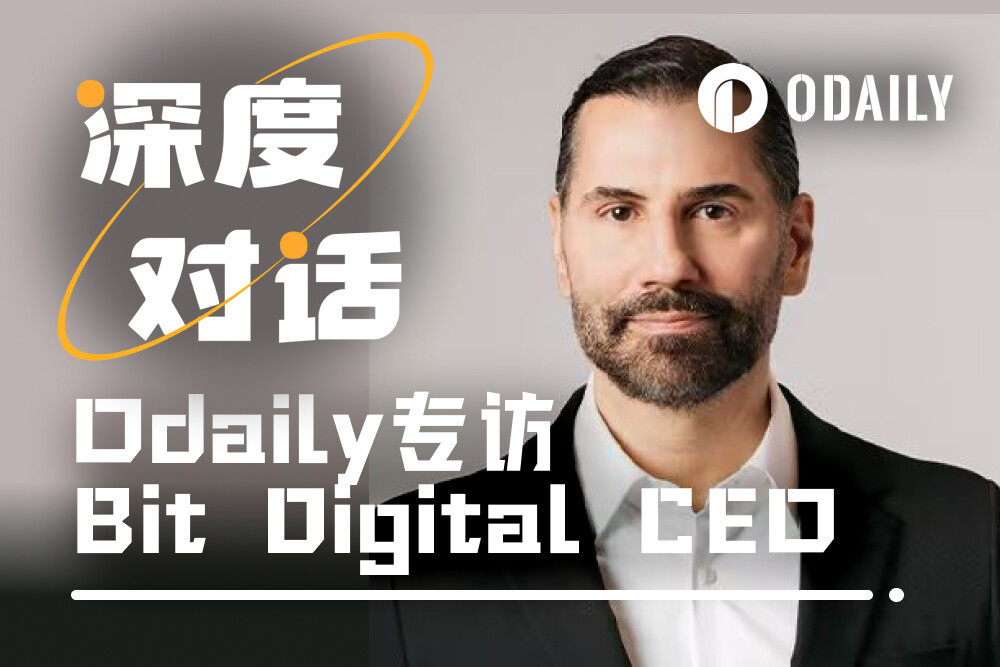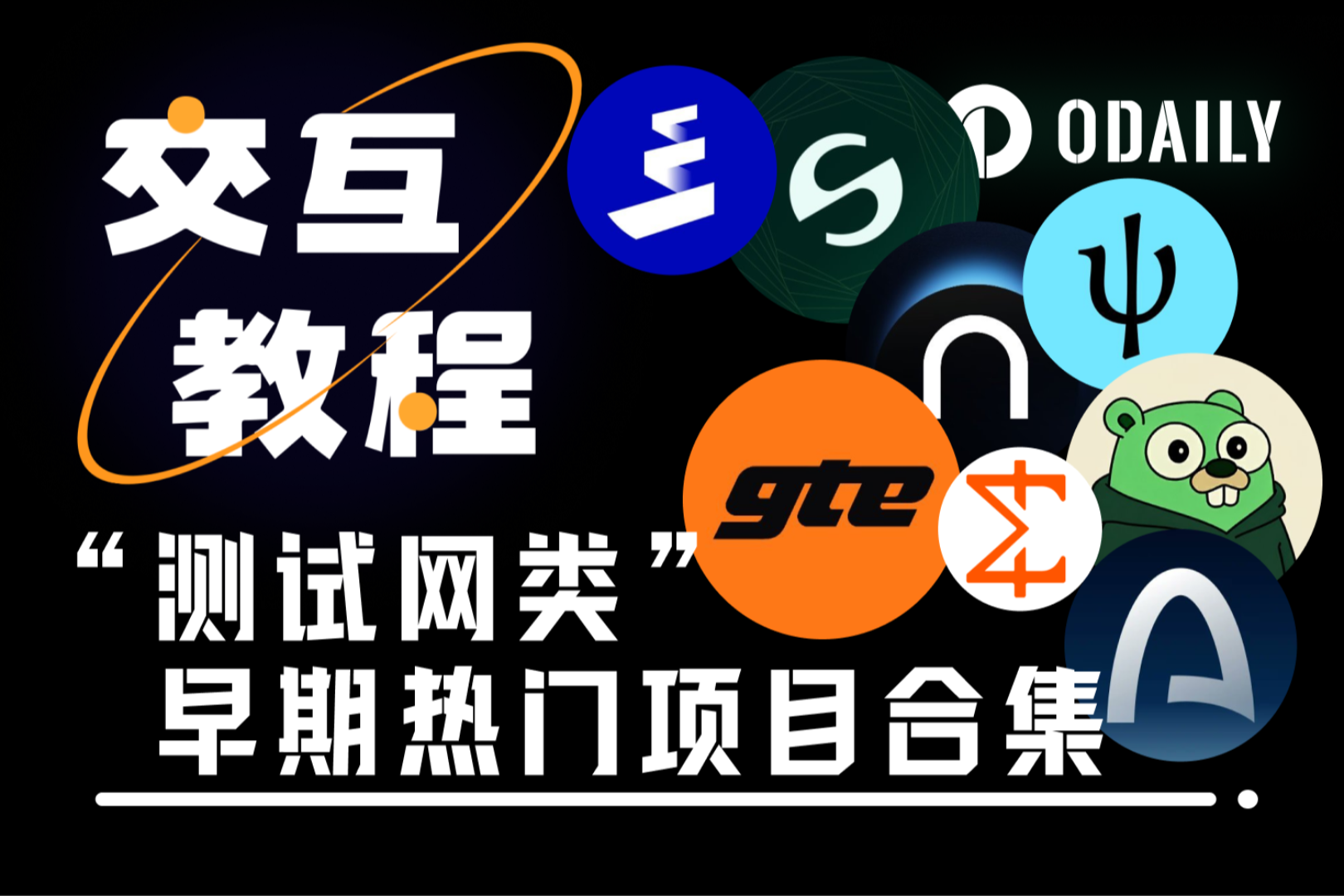Odaily Exclusive Interview with ETH Treasury Company Bit Digital: How to Become the Only Leveraged Ethereum Player?
- 核心观点:Bit Digital以独特模式结合以太坊与AI投资。
- 关键要素:
- 控股AI公司WhiteFiber,价值7.7亿美元。
- 以太坊生态唯一使用无抵押杠杆。
- 通过AI业务盈利购买ETH,避免股权稀释。
- 市场影响:为加密投资提供新范式,增强抗风险能力。
- 时效性标注:中期影响。
Original | Odaily Planet Daily ( @OdailyChina )
Author| jk
At the Token 2049 conference in Singapore, Bit Digital Chief Strategy Officer Sam Tabar shared a bold strategic vision: to become the only leveraged participant in the Ethereum ecosystem using unsecured debt , while organically combining Ethereum and artificial intelligence, two major themes of the era, through WhiteFiber, an AI infrastructure company valued at US$770 million.
While digital asset treasuries (DATs) are emulating MicroStrategy's business model, Bit Digital has taken a different approach. Unlike other companies, which rely solely on equity dilution or secured debt, Bit Digital holds a controlling 71% stake in WhiteFiber, a publicly traded AI company with a market capitalization of $1 billion . This means they can acquire more Ethereum by monetizing their AI business without diluting existing shareholders.
So, how did they stand out in the hot DAT market? Below is our in-depth conversation with Sam Tabar.
What is a Digital Asset Treasury Company? How is our version different from others on the market?
Odaily: Mr. Tabar, it's a pleasure to meet you. DAT (Digital Asset Treasury) is still a relatively new concept to many outside the industry. Could you first introduce your position and explain what's happening in this space?
Sam Tabar: Absolutely. First, we need to understand why someone would invest in a DAT. The basic logic is that the company will hold more cryptocurrency per share in the future than it does today, which is why it trades at a premium to its net asset value. There are three different ways this growth can occur.
You can do this through operating businesses, equity financing, or debt financing. Regarding operating businesses, Bit Digital is unique among DATs because we are the only one with significant exposure to profitable, high-growth operating businesses. We hold a 71% controlling stake in WhiteFiber, a publicly traded AI infrastructure company that recently completed its IPO and is listed on the Nasdaq under the ticker symbol WYFI.
Through our stake in WYFI, Bit Digital offers investors exposure to two of the most compelling investment themes in today's economy: Ethereum and AI. WYFI has a market capitalization of approximately $1 billion, and our controlling stake is currently valued at approximately $770 million. This isn't some small, legacy asset—it's the culmination of our strategic decision to enter the AI space two years ago. We built it from the ground up, completed its IPO, and now it's a high-growth AI company with a market capitalization of $1 billion.
Therefore, Bit Digital is more than just an ordinary DAT, but more like a strategic holding company focused on Ethereum and AI. We believe this provides investors with upside exposure to these high-growth assets while offering downside protection through the strong profit potential of WYFI and our ETH staking income.
Crucially, WhiteFiber represents an asset that Bit Digital can monetize in the future, and we can use the proceeds to purchase more Ethereum. This allows us to increase ETH density, or the amount of ETH per share, in a way that other companies in the Ethereum treasury ecosystem cannot replicate. While other companies can only increase their ETH purchases through debt or shareholder dilution, Bit Digital has a non-dilutive capital lever, creating a fundamentally different value proposition.
Regarding other approaches: DATs should only raise equity when they can deploy capital accretively—selling equity at a premium to net asset value. Another approach is debt financing, which is often the most direct way to acquire cryptocurrency. However, using the wrong type of leverage can be disastrous. Cryptocurrency is cyclical— we're in a bull market now, but there's always another bear market.
As a long-established public crypto company, Bit Digital's management team has weathered three cryptocurrency cycles. We understand how to navigate and manage a public company in diverse market conditions. Unfortunately, many other management teams seem to believe there will never be another winter, but it will certainly come.
For digital asset vault companies, the only responsible leverage is unsecured debt. Secured leverage—using crypto assets as collateral—means lenders can seize assets and force bankruptcy during a bear market, making it an extremely dangerous form of debt. This week, Bit Digital became the only digital asset vault company in the Ethereum ecosystem with unsecured debt to purchase Ethereum. We are the only leveraged participant in the Ethereum ecosystem.
Why are you optimistic about Ethereum?
Odaily: You are essentially positioning Ethereum as the backbone of future capital markets. What specific aspects of Ethereum's infrastructure make you believe it is suitable for this role?
Sam Tabar: One of the most important elements is the underlying technology, primarily smart contracts. Smart contracts provide a way to decentralize the financial system. I believe Ethereum can rewrite the entire financial system through this technology.
Think about how the current financial system profits from friction. When I transfer money to you, the middleman—a bank or other institution—takes a fee from the transaction. With Ethereum smart contracts, when certain conditions are met, value is automatically transferred through so-called atomic swaps. This is revolutionary because it eliminates the middleman and traditional banking infrastructure.
This creates the technological foundation to fundamentally rewrite the financial system. While Bitcoin lacks this capability, other blockchains like Solana do have smart contract functionality. However, Wall Street will always choose Ethereum because of its reliability—Ethereum remains stable, while Solana experiences outages. Institutional finance needs a blockchain that won't crash , which is why they choose Ethereum.
Odaily: Do you think there are any risks that need to be addressed before institutional capital fully accepts Ethereum?
Sam Tabar: Institutional capital is already flowing into Ethereum, especially with the regulatory clarity introduced by Congress, particularly regarding stablecoins. Congressional bills like the Genius Act and the Clarity Act are providing a comprehensive regulatory framework for stablecoins. Once this legislative framework is complete, we will see a significant expansion in the use of stablecoins , most of which are built on Ethereum. This legislative clarity regarding stablecoins will drive significant activity on the Ethereum network.
DATs vs. ETFs: A Sustainability Comparison
Odaily: Let's talk about the key differences between DATs and ETFs: ETFs have been the main driver of this bull market, and now DATs are emerging. Why are DATs likely to be more sustainable?
Sam Tabar: DATs offer more upside potential because you can use leverage. I'm surprised no other company in the Ethereum ecosystem is currently using uncollateralized leverage—we're the only one. This is surprising because Michael Saylor has shown how to get creative with capital structure, and uncollateralized leverage is a key tool for creating a premium over net asset value. I'm not sure why other Ethereum companies haven't adopted this approach, but we are the first to implement it.
Odaily: In addition to stablecoins, what are your expectations for regulatory acceptance of the DAT model?
Sam Tabar: The government's attitude towards DATs is quite positive. Regulators recognize the success of MicroStrategy's model, and it's inevitable that the Ethereum ecosystem will adopt Michael Saylor's strategy.
Ethereum + AI integration strategy
Odaily: Let’s talk about the integration of Ethereum and AI: How do you view the relationship between these technologies as parallel infrastructures, and how is this specifically reflected in Bit Digital?
Sam Tabar: This is very directly reflected in Bit Digital, as our company is comprised of two primary components: our Ethereum holdings and our 71.5% controlling interest in WhiteFiber. WhiteFiber is a pure play AI infrastructure company that just completed a very successful IPO last month, and we are very bullish on WhiteFiber's future.
As far as I know, Bit Digital is the only publicly traded company in the world with direct exposure to two of the most important technology narratives of our time: Ethereum and AI. Valuations are transparent—you can see the value of our Ethereum holdings in real time, and you can check the value of WhiteFiber on Nasdaq at any time. The market consistently provides valuations for both our Ethereum and AI exposures, eliminating guesswork. I don't know of any other company that offers direct exposure to both of these transformative technologies.
Future Vision and Investment Recommendations
Odaily: Looking ahead two to three years, how do you envision Bit Digital's identity? Will it be remembered as a DAT, a capital markets pioneer, or an AI and blockchain infrastructure company?
Sam Tabar: That's a great question. I believe we're often viewed as pioneers in the capital markets. People ask me if I'm an Ethereum maximalist— I'm not, I'm a shareholder maximalist. I want our firm to have exposure to two of the most promising sectors of our time. That's how we've positioned our firm, and I think it demonstrates our creativity and forward-thinking investment vision as a capital markets participant.
Odaily: For retail or institutional investors who are just learning about the concept of Bit Digital or Ethereum-AI integration, what is the most worthy reason to pay attention?
Sam Tabar: We knew that Ethereum technology was beginning to disintermediate financial infrastructure, and we were prepared for this transformation. We also knew that artificial intelligence was disrupting the traditional job market, and we were prepared for that, too. These changes are happening regardless of whether we can stop them, so the best strategy is to prepare for these inevitable shifts. That's exactly what we're doing at Bit Digital.
Startup Anecdotes: From Inspiration in Singapore to a $1 Billion Valuation
Odaily: Are there any interesting stories in the process of establishing Bit Digital that readers may find particularly interesting?
Sam Tabar: The idea for WhiteFiber actually originated a few years ago in Singapore. I was with my co-founder at the time, and ChatGPT had just launched. I showed it to my co-founder and said, "Look at this—it's amazing. You can ask it any question, and it'll give you a perfect answer." I put the screen in front of him and said, "Ask the most complex question you can think of."
He asked, and was surprised by the answer. He asked another question, and the result was equally astonishing. Then he asked, "How can we get involved?" We realized that AI is driven by infrastructure—GPUs and specialized data centers. As Bitcoin miners, we thought, "This might actually be a better business model." The transition from ASICs to GPUs wasn't as difficult as we initially thought.
We made that leap, landed our first customer a few years ago, and now have over 20 enterprise customers, generating over $100 million in annual revenue for WhiteFiber. We operate multiple data centers across North America and successfully completed an IPO. This journey all began with this conversation in Singapore at the end of 2022, when ChatGPT first launched.
We have an incredible team at WhiteFiber. Each of our four co-founders brings unique expertise. One excels in business development, another institutionalizes operations, a third manages risk, and I serve as a market evangelist. With such a complementary skill set, the transition has been incredibly smooth.
Essentially, the future is approaching rapidly—it's already here. The key to preparing for the impending changes is strategic thinking. Constantly considering what will happen next is a mental skill that must be cultivated, like building a muscle in the gym. Thinking ahead doesn't come naturally—it's much easier to simply react or follow instructions. But developing the ability to anticipate future trends and plan accordingly is a core competency that I encourage everyone to develop.



